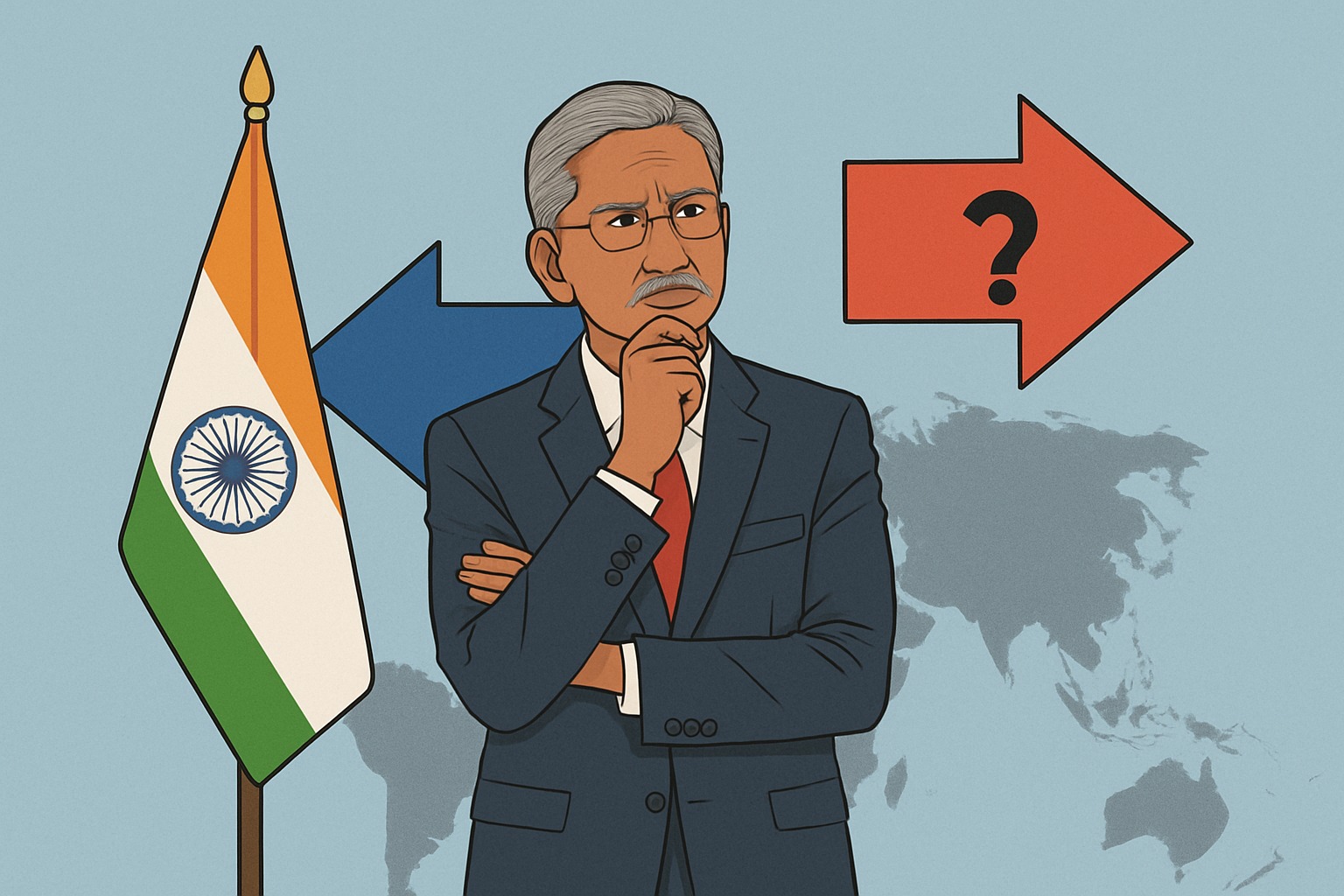Strategic Hedging or Strategic Confusion? India’s Rise as a Global Player

Strategic Hedging or Strategic Confusion? India’s Rise as a Global Player
The influence of India is growing worldwide, which is quite evident from its multi-alignment moves. Under its G20 presidency, it demonstrated itself as a voice of the Global South during the Global South summit. It amplified the voices of 125 developing countries, often ignored in G7 narratives. Likewise, the African Union was also inducted into the G20 during that tenure, emphasizing the leading role of India in South-South cooperation. In addition, India’s balanced brokering of Ukraine peace talks and promoting inclusive climate multilateralism through Think20 (T20) serve as examples of shaping norms beyond the US-China axis.
Despite India’s flexibility to balance between the West, Russia and China, India sometimes fails to take clear positions, making India look strategically confused regarding which side it is on. By maintaining ties simultaneously with West and Russia and China causes India to have an unclear position/stance on global issues like the Ukraine crisis. That is why India is often perceived as a confused member of the international community for not taking any firm side. However, India’s foreign policy is not confused; rather, its approach is strategic enough to make India a pole itself.
India’s Strategic Partnerships
India and the US keep engaging with each other in diverse sectors such as security, trade and technology etc. For instance, in terms of tech advancement, India has been cooperating with the US under the iCET, India–U.S. Initiative on Critical and Emerging Technologies, focused on AI, defense and space. In the Indo-Pacific, QUAD is formed for maritime security, disaster response, 5G, infrastructure. India is one of the top members of this strategic arrangement to counter China’s growing influence in the region. For trade, India also joined the Indo-Pacific Economic Framework (IPEF) with 13 other countries; however, it chose not to participate in trade.
This shows how India, despite engagements, always preferred issue-based partnership by avoiding formal military alliances with the US or QUAD. The reason behind why India does so can be attributed to the time when S. Jaishankar said, “Quad is not ‘Asian NATO.”
That means India is “not aligned, not an ally.” Thus, it values its strategic autonomy and engages with grouping for practical cooperation only, making India’s foreign policy seem strategically hedging and its commitments to its partnerships only surface-level.
India-China Relations
In response to the 2020 Galwan Valley clash resulting in the death of 20 Indian and 4 Chinese soldiers, once Indian External Minister Jaishankar said, “We cannot normalize relations with China while the border situation remains tense.” This also led India to selectively ban 59 apps of China, for instance, TikTok and WeChat. However, the Chinese imports have been tremendously high in India despite a ban on Chinese applications. This implies that even though political mistrust and border issues between India and China were there due to the Galwan Valley clash, trade and diplomatic ties between the two countries stayed intact.
China is India’s largest trade partner and India relies heavily on China for significant imports of electronics and solar panels. Also, the trade between the two countries hit $118 billion in 2023 and $127.71 billion in 2024, which dampens Indian officials emphasis on self-reliance (Atmanirbhar Bharat).
No major cutback following the Galwan Valley Clash does not indicate confusion in India’s foreign policy; rather, it shows a practical approach of India to balance national security with economic necessity.
Theoretical Framework
According to Strategic Hedging Theory, a state hedges when faced with uncertainty regarding the reliability of major powers. This approach involves simultaneously engaging with rivals on economic grounds while strengthening defense and diplomatic ties with strategic partners. In the case of India, it can be observed doing the same through involvement in BRICS and QUAD, consistent trade with China and growing defense cooperation with the US, with non-commitment. Through hedging, it aims to gain economic, diplomatic and technological benefits from all strategic partners without over-depending on any. Similarly, India does not alienate any partner; it cooperates with the US on defense and technology, trades with China to fulfill economic needs and leads the Global South.
Thus, the core assumptions of the Strategic Hedging Theory fit well with India’s calculated foreign policy.
Is West Misreading India?
Once S. Jaishankar, in his speeches at Raisina Dialogue 2022, said, “We will do what is in our interest, not what someone else expects of us.” At another place, he emphasized that India has not been a part of any military alliance historically and would never choose to do so in future. He further added, “India is not part of any alliance system,” stressing India’s strategy of “strategic autonomy.”
India is the third-largest economy, and it’s focused on increasing its global power by building strategic partnerships under the leadership of PM Modi. The members of those new partnerships, such as the US and Japan, consider India a counterweight to China’s rise. However, India is not anti-China. Instead of just reacting to its rivals, it is actively shaping its strategy. Not only does India trade a lot with China, but China could also invest in India’s economic reforms. Even though both are rivals, so are the business partners. Hence, considering China an enemy is not realistic at all. On the other side, the US, including the West, might be misreading India that since India is a democracy and will always side with them. In contrast, India will not allow the US to lead on every issue as per its strategic autonomy.
India does not seek a world dominated either by China or the US; rather, it aspires to shape a world order on its terms. More precisely, it does not want to pick a side, but it wants to be a side. India uses a three-way strategy, which can be called an I.C.E strategy: Investing in self, competing and cooperating with China and engaging but not obeying the US or anyone. The I.E.C. strategy of India is the expression of its strategic autonomy and its intentions for a multipolar world instead of choosing between the existing global powers (US and China).



